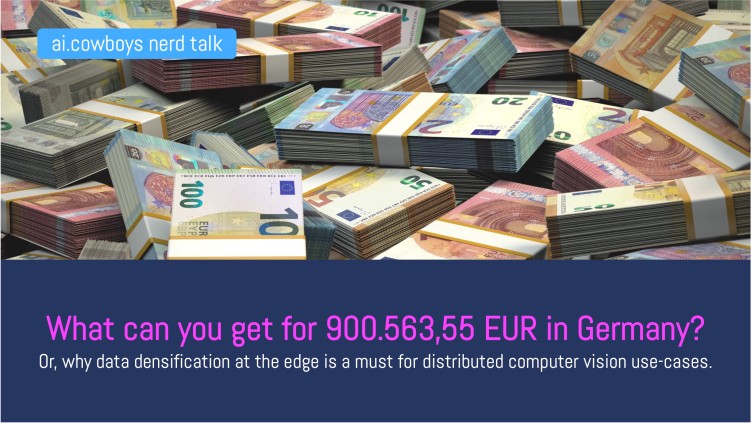»Imagine you could simply apply and operate AI everywhere.«
Möchten sie mehr darüber erfahren, wie AI Ihrem Unternehmen nützen kann? Dann lassen Sie uns sprechen.

Well, we suspect a lot. But that’s, among other things, the amount you’d spend on average for mobile data transfer if you sent a constant stream of data from a single camera at 8 frames per second (fps) at one megapixel to the cloud for 60 months. You do not believe that? Let’s take a look at the math:
8 fps * 60 sec * 60 min * 24 hrs * 365 days * 5 yrs = 1.261.440.000 frames
A megapixel image is about 300 kilobytes, which leads to the following equation:
1.261.440.000 * 300Kbps = 360.900 GByte
According to Cable UK the the average cost of mobile data transmission in Germany in Germany in 2021 will be $2.67 per Gbyte. This leads to:
360.900 Gbyte * $2,67 / 1,07 EUR = 900.563,55 EUR
An unrealistic scenario? Maybe. But:
BEEBUCKET GmbH
Neunkirchenweg 22
89077 Ulm | Germany
Phone +49-731-7903 8050
E-mail: hello@beebucket.ai
Möchten sie mehr darüber erfahren, wie AI Ihrem Unternehmen nützen kann? Dann lassen Sie uns sprechen.
“Imagine you could simply apply and operate AI everywhere.”
Want to learn more about how AI can benefit your business? Then let’s talk.